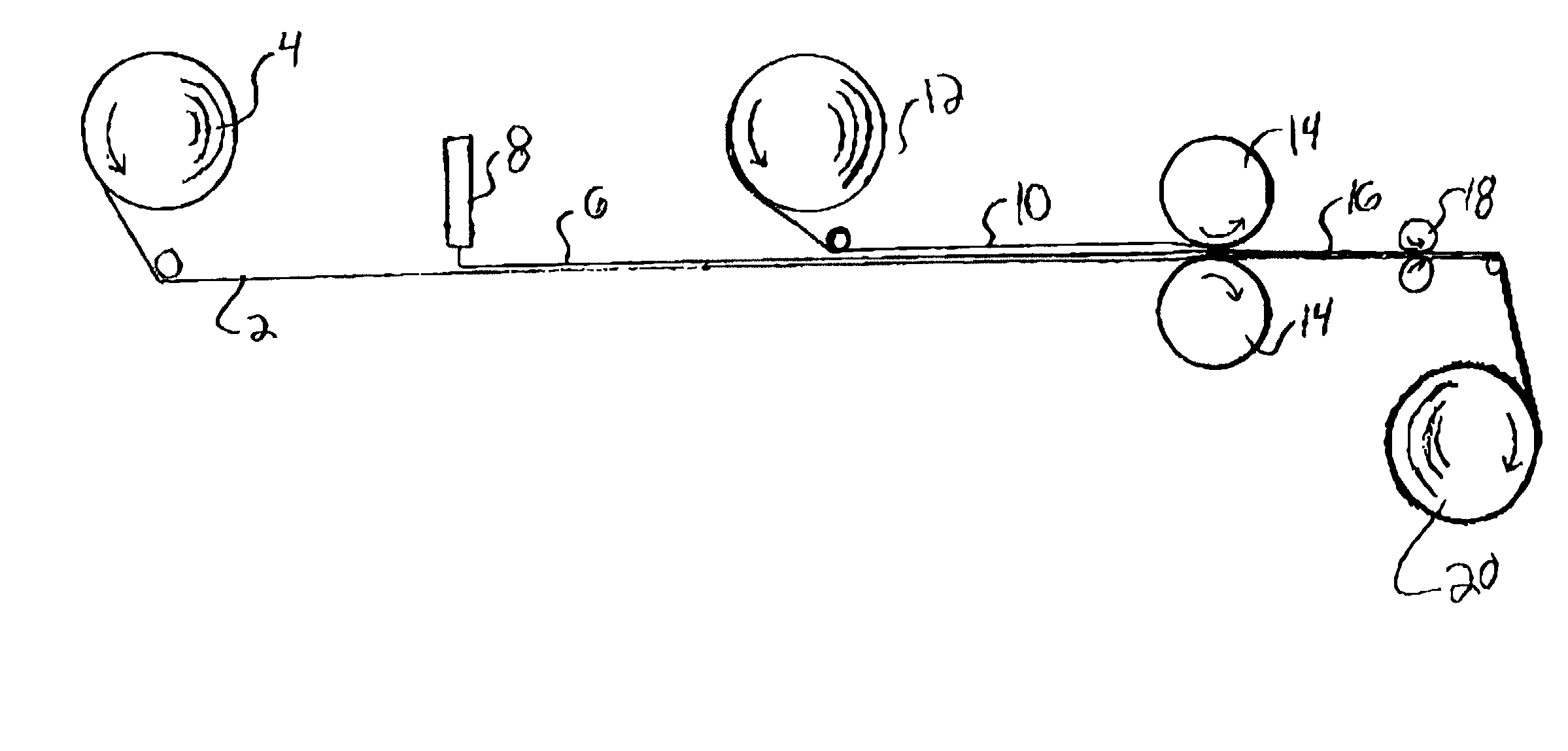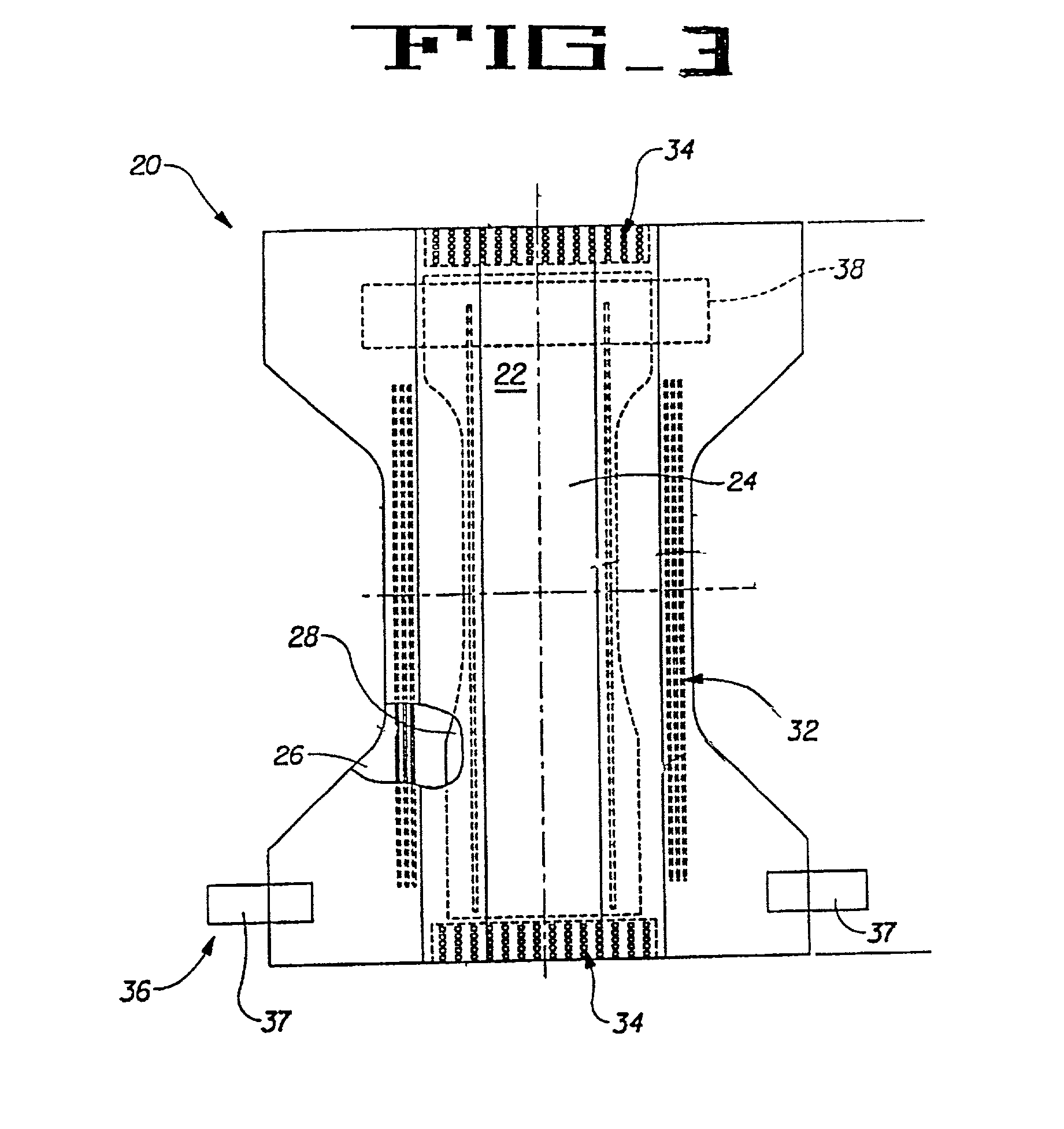Thermocalendered non-woven elastic laminate
- Summary
- Abstract
- Description
- Claims
- Application Information
AI Technical Summary
Benefits of technology
Problems solved by technology
Method used
Image
Examples
Embodiment Construction
[0038] Turning now to FIG. 1, a schematic of the preferred method of making a laminated non-woven elastic fabric is shown. A first non-woven layer 2 having a CD elongation of at least 120%, and more preferably 150%, is unwound from roller 4. Non-woven 2 has a MD elongation in the range of 25-70%, with 25-45% most common. In general, the lower the MD / CD elongation ratio, the higher the CD elongation; i.e. the more CD orientation of the fibers / filaments, the greater the CD elongation. Non-woven layer 2 may comprise spunbond or meltblown filament webs, or hydroentangled or carded staple fibers webs, such as highly randomized carded staple fiber webs. Hydroentangled webs and highly randomized, carded webs that are adhesive or thermal bonded are preferred.
[0039] Preferred materials of composition for web 2 are polyolefins and PET. A preferred basis weight for web 2 is between about 10-100 gm / m.sup.2, with 15-50 gm / m.sup.2 most preferred. Table 1 lists some examples of suitable non-woven ...
PUM
| Property | Measurement | Unit |
|---|---|---|
| Fraction | aaaaa | aaaaa |
| Fraction | aaaaa | aaaaa |
| Fraction | aaaaa | aaaaa |
Abstract
Description
Claims
Application Information
 Login to View More
Login to View More - R&D
- Intellectual Property
- Life Sciences
- Materials
- Tech Scout
- Unparalleled Data Quality
- Higher Quality Content
- 60% Fewer Hallucinations
Browse by: Latest US Patents, China's latest patents, Technical Efficacy Thesaurus, Application Domain, Technology Topic, Popular Technical Reports.
© 2025 PatSnap. All rights reserved.Legal|Privacy policy|Modern Slavery Act Transparency Statement|Sitemap|About US| Contact US: help@patsnap.com



